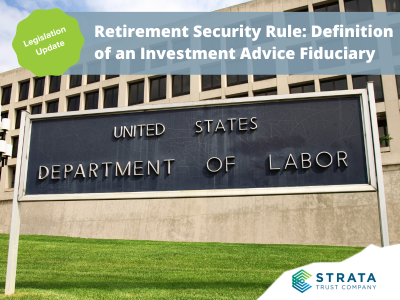We don’t normally think of giving money away as the best way to save money. But those who have reached the age when required minimum distributions (RMDs) must be taken have a nice option to reduce their taxable income. Qualified charitable distributions (QCDs) allow eligible taxpayers to exclude income from taxation if certain rules are met. As we approach the deadline for taking RMDs, you may want to consider a QCD to lessen your tax obligation — while also contributing to a worthy cause of your choosing.
QCD Basics
The fundamental rules for making qualified charitable distributions are simple.
- You must be at least age 70½. Exactly six months after your 70th birthday, you are eligible to make a QCD. This applies even if you will be subject to the new, later RMD age under the SECURE Act (now age 73).
- The QCD limit for 2023 is $100,000. Most IRA owners have RMDs that are much lower than this limit. And you can choose to make any portion of your RMD a QCD — or even exceed your RMD amount. (The 2024 limit increases to $105,000.)
- The QCD must be paid directly to the charity. This rule is important. If a check is used for the distribution, it must be cut in the name of the charity (even if you hand deliver it). Any electronic funds transfer must also be made directly to the charity.
- The receiving organization must be eligible. The Internal Revenue Code lists the details — you can view them here. But for our purposes here, think of your place of worship, an educational institution, or other not-for profit entities as eligible to receive your QCD.
- You must report your QCD on your tax return. Although you will not have to pay income tax on a QCD, you must report it to the IRS. Example: You file an IRA Form 1040-SR (for seniors). On line 4a, “IRA Distributions,” you enter the amount of your QCD. On line 4b, “Taxable Amount,” you enter “0” and enter “QCD” next to line 4b.
Is a QCD the Right Choice?
This question often arises: Why not just take my RMD, include it in my income, and then make a “normal” charitable contribution? This is a perfectly acceptable option for some taxpayers. But for many, the QCD is a better choice because it allows them to do two things.
First, the QCD removes the need to itemize a taxpayer’s deductions. So rather than taking the RMD, including it in taxable income, and then accounting for the charitable deduction on IRS Schedule A, “Itemized Deductions,” you can simply not include the distribution in taxable income in the first place (as in the example above). This may reduce tax preparation time and expenses while achieving the same objective as itemizing deductions.
Second (and related to the first), you may use the standard deduction while also getting “credit” for your charitable deduction. Several years ago, the standard deduction was increased, and other itemized deductions were reduced (e.g., the deduction for state and local taxes). So, more taxpayers have been using the standard deduction in recent years. In fact, current estimates of those itemizing on their tax returns place the figure at only 18%.
QCDs Can Be Great, But Use Caution
There may be other reasons to use the QCD approach to making charitable contributions from an IRA. For example, the IRS limits charitable deductions to a certain percentage of a taxpayer’s modified adjusted income. So someone with a lower annual income, despite having considerable assets, could face surprisingly low charitable contribution limits on itemized deductions.
But those considering QCDs should also exercise caution. For instance, IRA owners who continue to make deductible Traditional IRA contributions past age 70½ may have to reduce their QCD amounts. This rule prevents seniors from both excluding RMDs from taxation while also taking a deduction for contributions that are made past age 70½. (Fortunately, the IRS provides a worksheet in Publication 590-B for those in this situation.) Making QCDs can create tax savings and promote charitable giving — but ultimately, whether a QCD makes sense or not should be based on sound tax advice.
Next Steps
RMDs are normally due by December 31 of each distribution year — and for STRATA IRA owners, RMD requests are due by December 1 of each year to meet this December 31 deadline. To request an RMD from your STRATA IRA, please select the IRA Distribution Request form that applies to your IRA account. And if you’ve already satisfied your RMD — or if you don’t yet have to take RMDs — consider QCDs when it’s time to take one.
For questions regarding RMDs or QCDs for your STRATA IRA, please contact our self-directed IRA experts.









